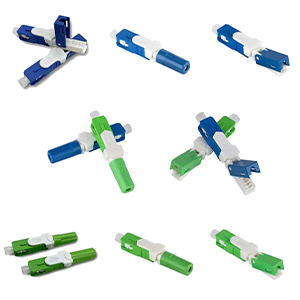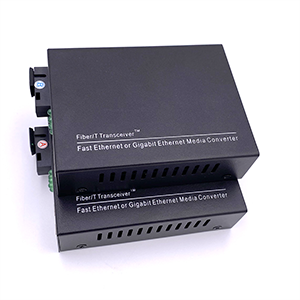Optical fiber plays an important role in modern communications. This article will focus on the size specifications of optical fiber. We will first define the basic composition and working principle of optical fiber and describe its wide application in communication networks. Next, we will introduce the main size specifications of optical fiber, including core diameter, cladding diameter and outer diameter.
Then, we will analyze the characteristics and applicable scenarios of different optical fiber sizes. Single-mode optical fiber has a high transmission rate and is suitable for long-distance backbone networks and metropolitan area networks; while multimode optical fiber has a lower transmission rate and is suitable for short-distance local area networks and inside buildings. Finally, we will explain the key factors to consider when choosing optical fiber size, such as transmission distance and rate requirements, installation environment, and cost and engineering complexity.
What is optical fiber
Optical fiber is a high-speed communication medium made of glass or plastic that uses light signals to transmit data. Optical fiber has extremely high bandwidth and extremely low signal loss, supporting long-distance, ultra-high-speed data transmission. It is widely used in telecommunications, the Internet, and data centers to meet large-scale data transmission needs.
Basic composition and working principle of optical fiber:
Optical fiber is a medium used for optical signal transmission. It mainly consists of the following three parts:
(1) Core:
- The core is the transmission channel of the optical signal and is made of a material with a high refractive index.
(2) Cladding:
- The cladding has a lower refractive index and is wrapped around the outside of the core.
(3) Coating:
- The coating is located outside the cladding and is used to protect the optical fiber from damage by the external environment.
The working principle of optical fiber is based on total reflection: the optical signal is continuously reflected and propagated inside the high refractive index core and finally reaches the destination. This all-reflection transmission mode enables optical fiber to achieve efficient and long-distance optical signal transmission.
Application of optical fiber in communication networks:
Optical fiber is widely used in communication networks, mainly in the following aspects:
(1) Used for high-speed broadband data and voice transmission:
- Optical fiber has extremely high bandwidth and transmission rate, and can support Gbps-level high-speed communication.
- Therefore, it is very suitable for carrying various broadband services, such as high-definition video, large data transmission, etc.
(2) Widely used in backbone networks, metropolitan area networks, etc.
- Optical fiber is widely used in the backbone and metropolitan area network layers of communication networks due to its excellent transmission performance.
- These network layers have high requirements for transmission capacity and reliability, and optical fiber can meet the needs well.
In short, as an advanced optical communication technology, optical fiber plays an indispensable and important role in the current communication network.
Main dimensions of optical fiber
The main dimensions of optical fiber include core diameter, cladding diameter and coating diameter. Common optical fiber core diameters are 8-10 microns for single-mode and 50 or 62.5 microns for multi-mode, and the cladding diameter is usually 125 microns. The coating protects the optical fiber, and the common size is 250 or 900 microns. Different specifications are suitable for different transmission needs.
Optical fiber is mainly composed of three parts: optical core, cladding and protective layer. Its dimensions mainly include the following aspects:
Optical core diameter:
(1) Single-mode fiber:
- The optical core diameter is 8-10 microns.
(2) Multimode Fiber:
- The core diameter is 50-100 microns.
Cladding diameter:
(1) Single-mode fiber and multimode fiber:
- The cladding diameter is usually 125 microns.
Outer diameter:
The outer diameter of the optical fiber varies according to the application scenario and protection requirements. Common sizes include:
(1) 0.9mm
(2) 2.0mm
(3) 3.0mm
These outer diameters are suitable for different installation environments and protection requirements. Smaller-sized optical fibers are more suitable for indoor wiring, while larger-sized optical fibers are more suitable for outdoor wiring and withstand greater mechanical loads. In general, the size specifications of optical fibers reflect their different characteristics in terms of optical signal transmission, mechanical strength, etc., and need to be reasonably selected according to the actual application scenario.
Characteristics and applications of different optical fiber sizes
Single-mode optical fiber has a small core diameter (8-10 microns) and supports long-distance, high-speed transmission. It is often used in telecommunications and wide area networks. Multimode optical fiber has a larger core diameter (50 or 62.5 microns) and is suitable for short-distance, high-bandwidth local area networks and data centers. Optical fibers of different sizes meet different transmission needs and application scenarios.
Single-mode Fiber features and applications:
(1) Features:
- Small optical core size (8-10 microns)
- High transmission rate, up to Gbps level
- Suitable for long-distance transmission
(2) Applications:
- Mainly used in the backbone network and metropolitan area network of communication networks
- Carry various high-bandwidth services, such as high-definition video, cloud computing, etc.
- Able to achieve long-distance, high-speed optical signal transmission
Multi-mode Fiber features and applications:
(1) Features:
- The core size is relatively large (50-100 microns)
- The transmission rate is relatively low, generally at the Mbps level
- Suitable for short-distance transmission
(2) Application:
- Mainly used in local area networks and inside buildings
- Used to connect network devices and transmit small and medium-sized data streams
- Suitable for deployment within relatively short distances
In short, single-mode fiber and multi-mode fiber differ in transmission rate and applicable distance due to the different core sizes. Single-mode fiber is more suitable for long-distance, high-bandwidth applications, while multi-mode fiber is more suitable for short-distance, low-bandwidth local area network environments.
Considerations for fiber size selection
When selecting fiber size, consider transmission distance, bandwidth requirements, cost, and application scenarios. Single-mode fiber is suitable for long distances and high bandwidth requirements, while multimode fiber is suitable for short distances and cost-sensitive occasions. The application environment and future expansion requirements are also important considerations.
When actually deploying a fiber network, choosing the appropriate fiber size specifications requires comprehensive consideration of the following important factors:
Transmission distance and rate requirements:
- Evaluate the required transmission distance and bandwidth rate requirements based on the actual network application scenario.
- Single-mode fiber is suitable for long-distance, high-rate applications, while multimode fiber is more suitable for short-distance, low-rate scenarios.
Installation environment and laying conditions:
- Consider the actual environment of fiber deployment, such as indoor buildings, outdoor underground pipelines, etc.
- Choose the appropriate outer diameter size to meet the wiring and protection requirements of different environments.
Cost and project implementation complexity:
- The cost of optical fiber varies with different sizes.
- At the same time, optical fibers of different sizes will also have different complexity in laying and connecting processes.
Taking the above factors into consideration, it is necessary to weigh the following factors when choosing the size of optical fiber:
- If long-distance high-speed transmission is required, single-mode optical fiber should be used.
- If only basic broadband connection is required over a short distance, multimode optical fiber can be considered.
- Factors such as installation environment and project cost should also be given sufficient attention and consideration.
Only by comprehensively weighing all factors can the most appropriate optical fiber size be selected.
Summary
Rational selection of fiber size specifications is crucial to building a high-performance communication network. Our company has long focused on the research and development and application of optical communication technology and has rich practical experience. We provide a full range of fiber products, including single-mode fiber and multi-mode fiber, to meet the needs of different network scenarios.
Our fiber products use industry-leading technical solutions and have achieved excellent levels in transmission performance, reliability and environmental adaptability. At the same time, our team of engineers will provide you with professional demand analysis and solution design services to ensure that the deployed fiber solutions can meet your actual needs to the greatest extent. Contact us now to learn more.
Fiber Size FAQ
A standard optical fiber typically has a core diameter of 8-10 micrometers (µm) for single-mode fibers and 50-62.5 µm for multimode fibers, with an overall cladding diameter of 125 µm.
The core diameter of a single-mode optical fiber is usually around 8-10 micrometers (µm).
The core diameter of a multimode optical fiber typically ranges from 50 to 62.5 micrometers (µm).
The cladding diameter of most optical fibers is standardized at 125 micrometers (µm) for both single-mode and multimode fibers.
The buffer coating, which protects the fiber, typically adds up to 250 micrometers (µm) in diameter, though it can vary depending on the specific design and application.
The core diameter affects the type of light transmission and bandwidth. Single-mode fibers with a smaller core allow for longer distance transmission with higher bandwidth, while multimode fibers with larger cores are suited for shorter distances and lower bandwidth applications.
The outer jacket of an optical fiber cable can vary widely depending on the type and application, but it generally ranges from 1.6 mm to 3 mm in diameter.
The core diameter is designed to support specific wavelengths of light. Single-mode fibers (8-10 µm core) are typically used with wavelengths around 1310 nm and 1550 nm, while multimode fibers (50-62.5 µm core) are used with wavelengths around 850 nm and 1300 nm.
Yes, the International Telecommunication Union (ITU) and Telecommunications Industry Association (TIA) provide standardized specifications for optical fiber dimensions, including core and cladding diameters.
Yes, optical fibers can be manufactured with customized dimensions to meet specific application requirements, though standard dimensions are typically used in most commercial and industrial applications.




